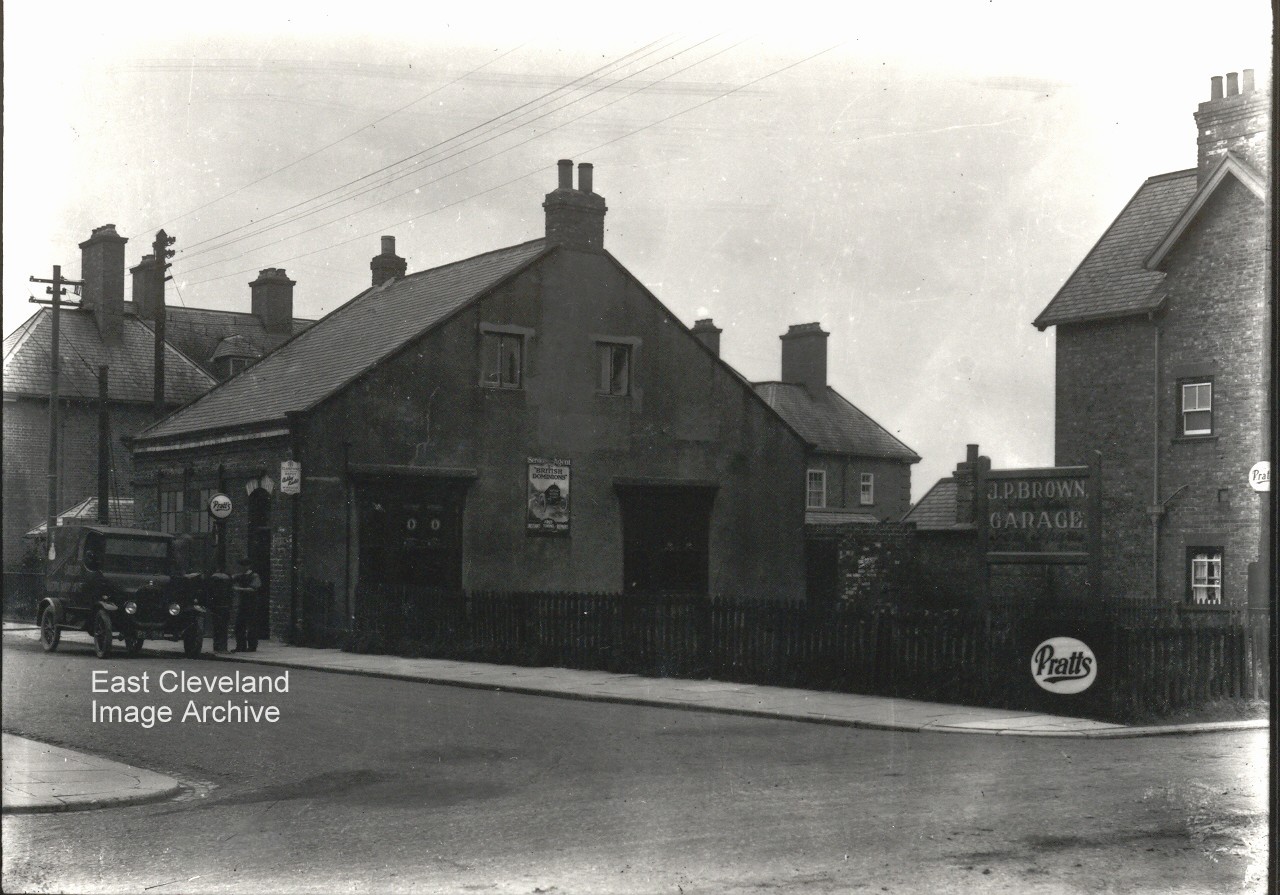
A view of the J. P. Brown’s garage on West Road, Loftus; many years later to be Charlie Stokoe’s garage. Originally the Bible Christian Chapel from the 1890’s into the 20th century.
Image courtesy of the Pem Holliday Collection.
|
|
||
|
A view of the J. P. Brown’s garage on West Road, Loftus; many years later to be Charlie Stokoe’s garage. Originally the Bible Christian Chapel from the 1890’s into the 20th century. 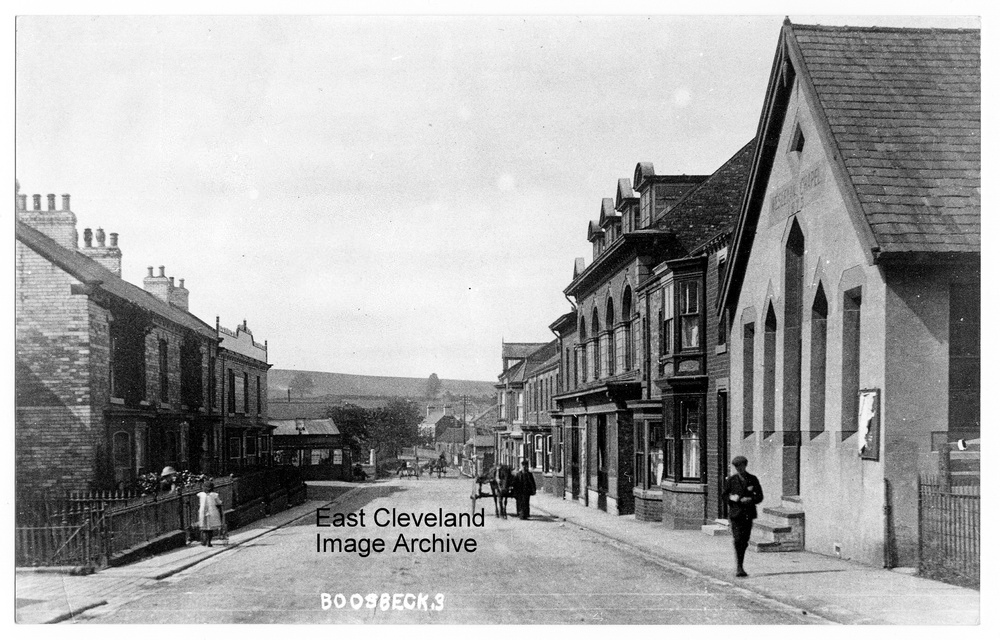 The High Street, Boosbeck. The large triple-fronted shop on the right of the image was a branch of the Skelton Co-operative. The floor above was known as ’Rushby’s Rooms’; where a sewing and knitting workshop was organised as part of a scheme to give unemployed miners and their families an alternative source of work and support. Chronicled in ”Heartbreak Hill” by Malcolm Chase & Mark Wyman. Judy Last advises: “My great grandparents, Edwin and Grace Tuck ran the Grocer & Drapers shop at 37 High Street, Boosbeck and were there from at least 1877. Previous to this Edwin has been an Ironstone Miner in Normanby (1871 census). By 1899 Edwin had passed the shop on to his youngest son, Simon (known as Sim). Sim continued to run the Grocers in the High Street and was there in the 1911 census. His mother continued to live at 44 High Street until her death in 1927.” Evelyn Jepson adds: “My grandmother, Eva Gertrude Jepson, owned one of the row houses on the Stanghow road. Before she owned it they said it was a funeral home, and the front window was a viewing facility. I know the place was haunted. Both upstairs in the bathroom, and in the viewing section of the house. And it was told us kids that if you hear any tapping at night, it were the poor miners trapped in the mines that never got out, as the tunnels went under the dwellings.” Paul comments: “It seems the road drops down in level in front of the public house and the building below it is no longer there in our modern era. I wondered why the main road falls away at a certain point.” Whilst Angela List-Evans asks: “Chase and Whyman (in ‘Heartbreak Hill’ stated that the shop was empty in 1933 and then Boosbeck furniture moved in as part of a Pennyman social enterprise scheme. Does anyone know why the Skelton Coop moved out or was it just a spare room that was empty? The sewing and knitting group was upstairs as part of Ruth Pennyman’s scheme.” Image courtesy of the Pem Holiday Collection and Cleveland Ironstone Mining Museum; thanks to Judy Last, Evelyn Jepson, Paul and Angela List-Evans for the updates. 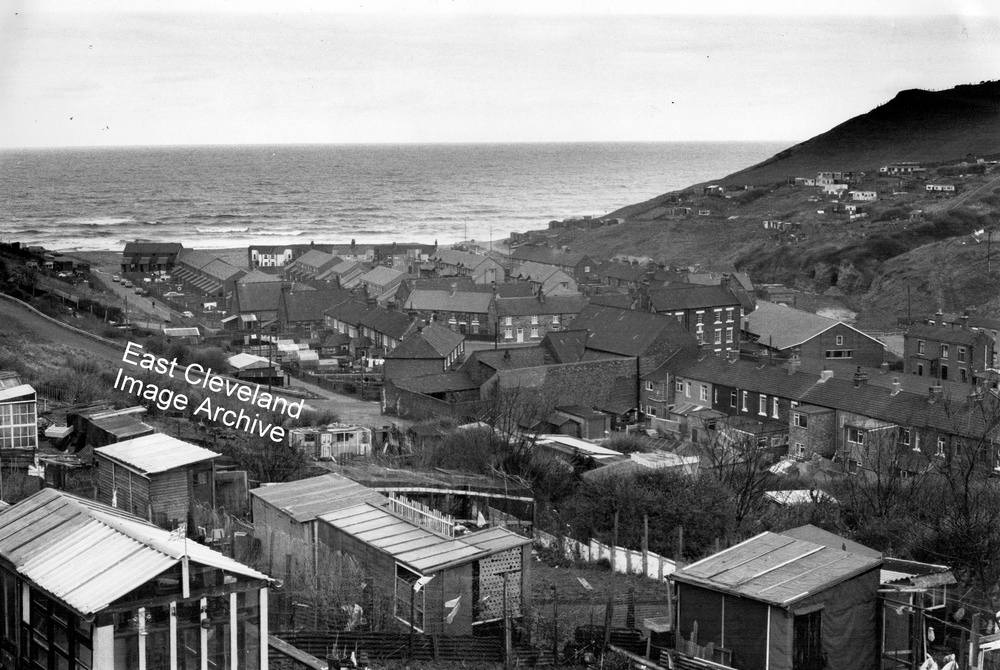 A view of the renewed Skinningrove village, showing the new houses on the High Street, but with the parade of shops (at the bottom of Nixon’s Bank); clearly visible. Together with the now derelict allotments off Grove Road, this is a community still vibrant and loved of its’ inhabitants. Image courtesy of the Pem Holliday Collection. 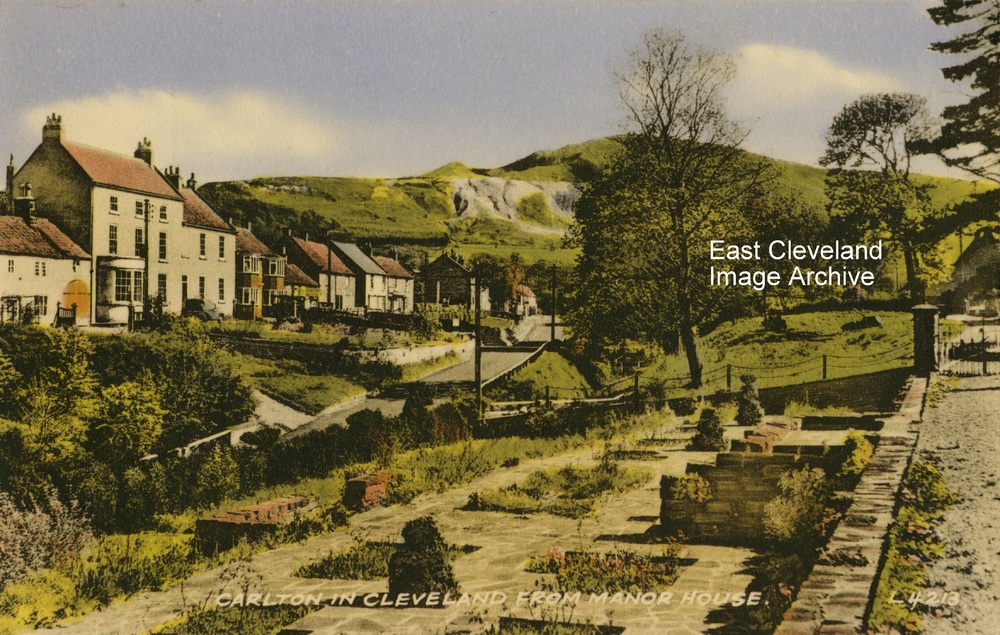 A view from the Manor House at Carlton of Carlton Bank, better known now for the gliders and Lord Stones café at the crest of the hill. This view from a postcard produced by Valentine’s and is post marked 17th June 1956. Image courtesy of John G> Hannah. 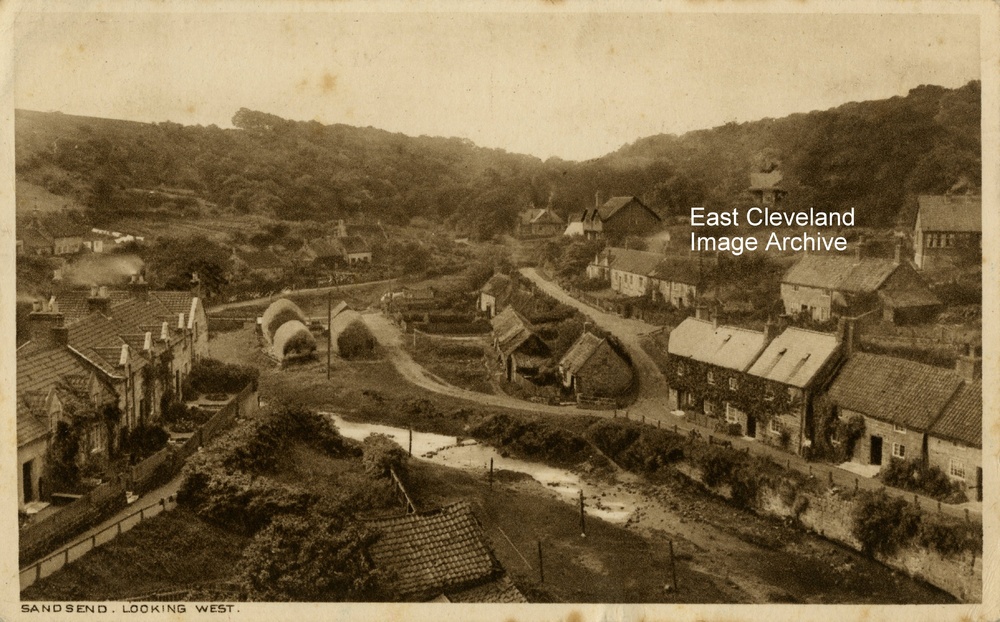 This Tom Watson postcard dating from 1927, the sender tells of travelling round the moors and was considering a cycle ride from Sandsend to Goathland, an energetic sort! Unfortunately as Peter Appleton points out; the card’s title is incorrect. this view is more south westerly than west. Image courtesy of John G. Hannah, thanks to Peter Appleton for the update. 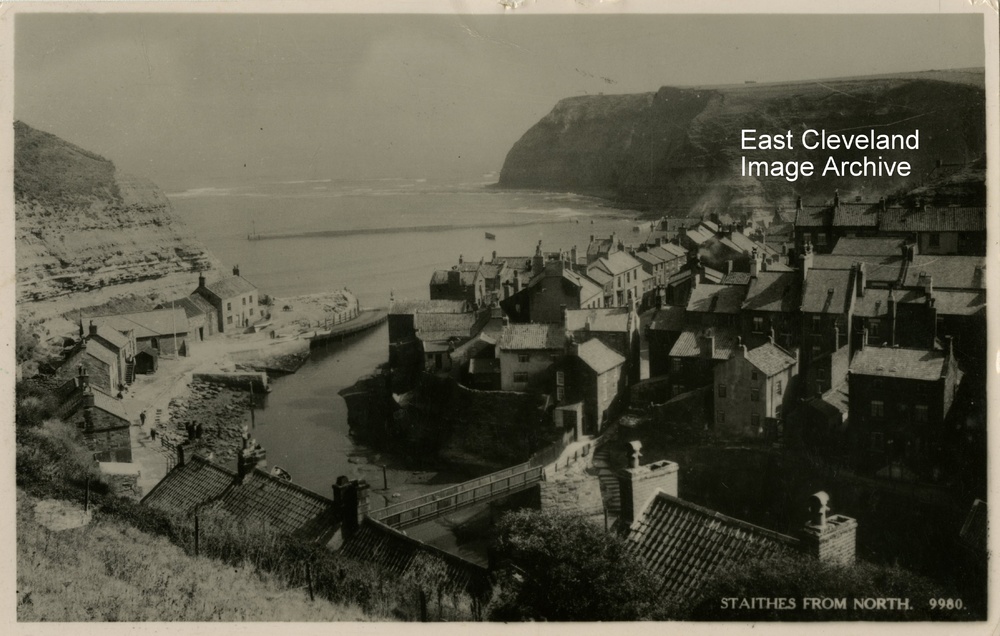 A postcard view of Staithes postmarked 5th August, 1941, is obviously pre World War II. It shows the village much as it is today, although the breakwaters are not as prominent. Image courtesy of John G. Hannah. 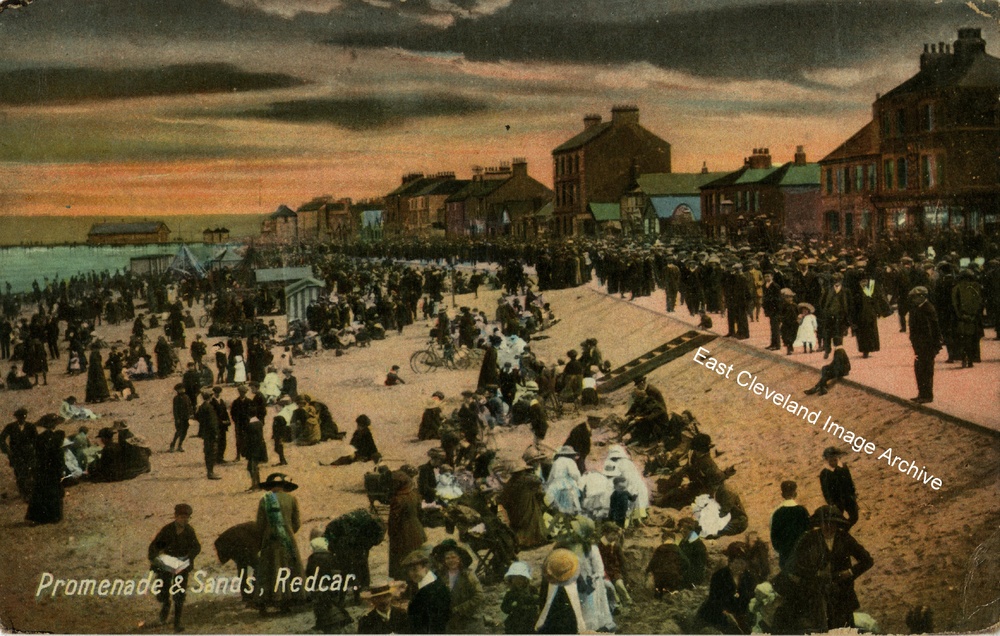 The reverse of this postcard view of Redcar sands is postmarked 21st May 1917. However the dress of the participants in the scene would probably date it to pre World War I. Especially as postcard production during World War I could have been viewed as ‘against the nation’s interest! Image courtesy of John G. Hannah. 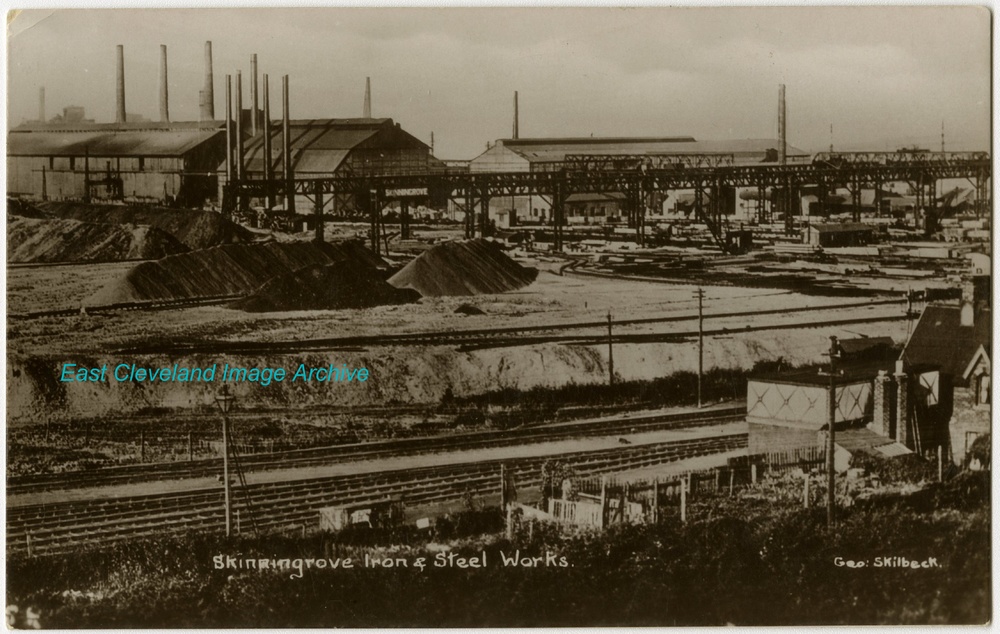 A pre-war photograph of Skinningrove Works. A George Skilbeck postcard courtesy of the Pem Holliday Collection. 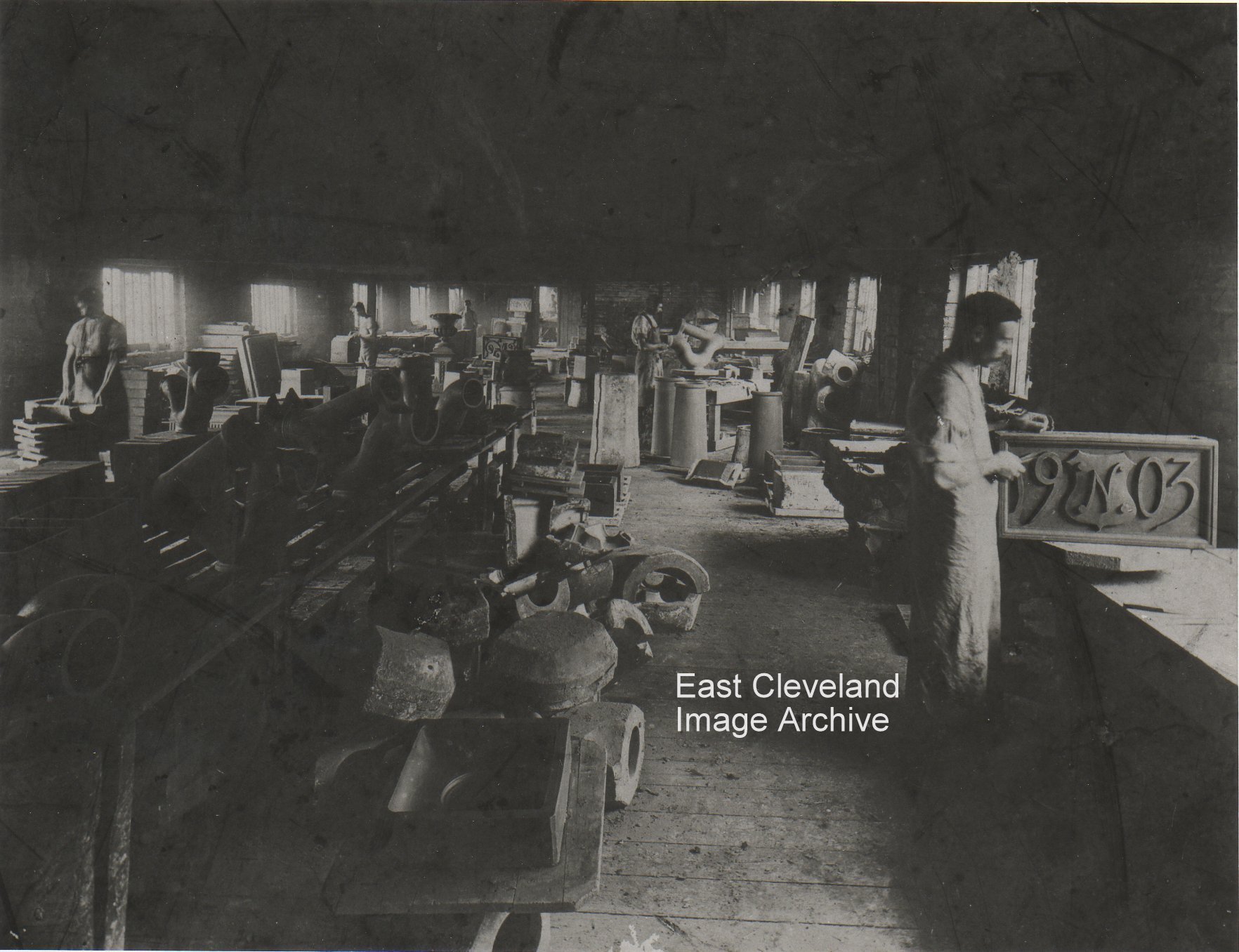 Previously shown on site as: ‘Ceramic Workshop’ we are now aware that it could not be the Loftus brickworks (where bricks were made from about 1830 to 1870s’) it is believed to be the workshops of the brick works at Commondale. In 1861, a Stokesley printer called John Pratt who owned land around the Commondale area did just that and set up his Cleveland Fire and Brick Company. The short-lived Commondale Pottery was set up by John Crossley, a retailer of building products from Stockton-on-Tees, on the site of a former brickworks which Crossley had acquired in 1872. The manufacture of art and domestic pottery was begun in April 1880, as an addition to the manufacture of bricks, tiles and pipes. The Commondale Pottery produced a wide range of domestic wares in both red and buff terracotta, some with elaborate painted and glazed decoration. After a short cessation in production and trading. The Commondale Brick & Pipe Works traded again from the late 1880s or early 1890s until 1947, when it closed. The brickworks site is now occupied by a Cleveland Scout campsite. Peter Appleton queries: “Anyone got any thoughts on where the “1903 N” special was destined to go? There’ll be a story lurking there, if it can be teased out.” Joan Smith asks: “My great grandad worked in a pottery round Middlesbrough, Stockton on tees , area in the late 1800s. He used to travel to Belgium, with his family, on more than one occasion. I am wondering what his job would have been. More importantly which pottery he would have worked for. His name was Christopher Dunning.” Peter Connor advises: “The 1903 stone that the man in the picture is working on is on the end of Ness Terrace in Commondale.” Image courtesy of the Pem Holliday Collection, thanks to Peter Appleton, Joan Smith and Peter Connor for the updates. 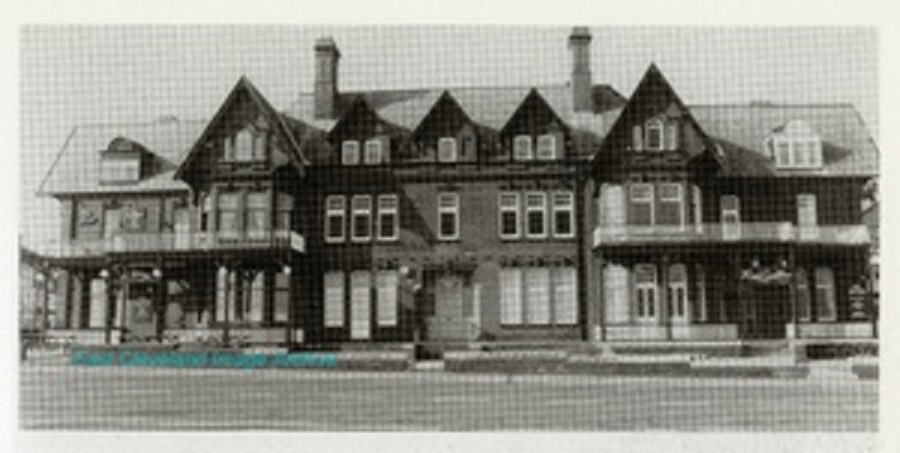 Marine Parade has wonderful views of the sea which were part of the original attraction of the development of Saltburn. This block of properties; Marine Hotel on the left, Masonic Hall in the centre and Red Gables on the right. The Marine Hotel was formerly Dr Burnett’s private house with his surgery at the rear. The Masonic Hall’s basement (after strengthening) was the headquarters of the ARP – air raid wardens – during World War II. Red Lodge was for many years used by Saltburn High School for Girls and is now a block of flats or apartments. Janet Courage (nee Thurlow) tells us: ”I attended Red Lodge in 1952, my first year of High School before moving to Cleveland Grammar School. I remember going down to the beach for P.E., those treks back and forth to Saltburn High School. I have lived in Vancouver, Canada since 1957 and just decided to find out what happened to Red Lodge.” Jenny Traveller responds with: “Thank you Janet! My mother ( born 1932) went to Saltburn High School and mentioned Red lodge and Pearl Hall as former school buildings to me before my very recent visit to Saltburn. I found the main school building, now used as the Earthbeat centre,and took photographs to show my Mum, but could not find Red Lodge or Pearl Hall. I did find Pearl Street, but found no trace of Pearl Hall. I walked past the Marine Hotel and Masonic Lodge without realising that Red Lodge was part of the same row. So thank you!” Image courtesy of a friend of the ECIA, many thanks to Janet Courage and Jenny Traveller for the updates. |
||
Recent Comments